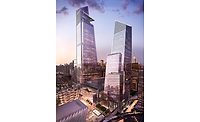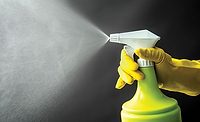Curtain Wall Rises on Iconic Hallidie Building

Photos © Sherman Takata, Takata Photography; Annie Lo, McGinnis Chen Associates.
After two years of restoration, the façade of the seven-story Hallidie Building on Sutter Street in San Francisco has regained its claim as one of the city’s, and the country’s, most significant architectural landmarks. Built in 1918, the historic building is owned by Edward J. Conner and Herbert P. McLaughlin.
“The Hallidie Building is known the world over as a progenitor of modern architectural design,” Conner stated in an announcement of the project’s completion. “We owed it to the city of San Francisco to restore this façade to its original glory.”
In an article for the San Francisco Chronicle, urban design critic John King described the restored Hallidie Building as “one of the most important architectural sights in San Francisco.” According to King, “The transparent net of glass is startling even now on a block otherwise lined with buildings clad in stone, and in its time it was revolutionary: the first glass curtain wall in the United States, the ancestor of the towers that gleam on countless skylines.”
Designed by Willis Polk, one of San Francisco’s leading architects at the turn of the 20th century, the Hallidie Building was owned by the University of California and named for one of its regents, Andrew Hallidie, who also invented the cable car. In 1971, the Hallidie Building was listed on both the National Registry of Historic Places and the San Francisco Historic Landmarks and Districts.
Over the years, the Hallidie Building façade had suffered from water infiltration, causing damage to its structural steel and decorative metalwork. In 2011, restoration work was initiated by the owners and a team of professionals that included The Albert Group, project manager; McGinnis Chen Associates, architects of record; and Page & Turnbull, serving as the preservation architect.
The overall project involved removal, repair and reinstallation of approximately 735 sheet metal and railing components for the building’s ornamental balconies and fire escapes, along with 513 windows. A poly sheeting containment system was constructed around work areas to prevent lead-based paint chips from migrating into the environment.
Existing paint on the façade was removed in blasting chambers by Abrasive Blasting & Coating (AB&C), Inc., of Vallejo, CA, and primed with Series 90-97 Tneme-Zinc, an aromatic urethane, zinc-rich primer from Tnemec Inc., Kansas City, MO.
“Wendy Amos worked with the design team to select a coating system that would achieve the highest level of performance in terms of color and gloss retention,” according to coating consultant Carl Bowers with Amos and Associates in Auburn, CA. “After priming, the metalwork was transported to Van Mulder Sheet Metal for repairs and strengthening with fiberglass.”
Once repaired, the ornamental components were returned to AB&C where they received a coat of Series 135 Chembuild, a modified polyamidoamine epoxy, which is an ideal foundation for the specified intermediate coat of Series 1075 Endura-Shield II, an aliphatic acrylic polyurethane coating. Nearly 235 gallons of Series 1075 was used.
“Series 135 was also used to prime the metal fire escapes and remaining curtain wall structure in the field while the in-shop work took place,” Bowers noted.
More than 300 gallons of high-solids fluoropolymer coatings that offer outstanding color and gloss retention were applied as the finish coat to exterior metal, including structural steel. Blue-colored components received either Series 1071V Fluoronar, a low-VOC semigloss fluoropolymer coating, or Series 1072V Fluoronar, which offers a satin finish.
Gold-accented components received a coat of Series 1078 Fluoronar Metallic, followed by a clearcoat of Series 1079 Metallic Clearcoat. All coatings were supplied by Tnemec.
“The advantage to this coating system is unsurpassed protection against ultraviolet light attack and the elements of weather, such as San Francisco fog,” Bowers added.
As a celebration to the completed restoration, San Francisco Mayor Ed Lee, declared May 1st “Hallidie Building Day.” In 2013, the restored facade was named winner of the Charles G. Munger Award presented by the Society for Protective Coatings to an outstanding industrial or commercial coatings project that demonstrates longevity. The project also won the AIA CA Council, BD+C Platinum Award and Engineering News Record’sBest CA Renovation/Restoration Project of the Year in 2013.
Looking for a reprint of this article?
From high-res PDFs to custom plaques, order your copy today!







